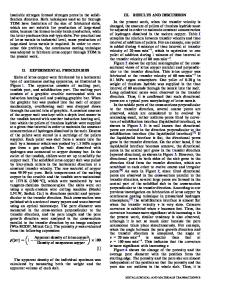Crafting plaster through continuous mobile robotic fabrication on-site
- PDF / 7,029,840 Bytes
- 11 Pages / 595.276 x 790.866 pts Page_size
- 52 Downloads / 278 Views
ORIGINAL PAPER
Crafting plaster through continuous mobile robotic fabrication on‑site Selen Ercan Jenny1 · Ena Lloret‑Fritschi1 · Fabio Gramazio1 · Matthias Kohler1 Received: 22 June 2020 / Accepted: 26 October 2020 / Published online: 12 November 2020 © The Author(s) 2020
Abstract Industrialization of architectural components and technological advances have had a significant impact on how we design and build. These developments, resulting in mass-produced and panelized architectural components, have rationalized building construction. However, they often do not reveal the true potential of the inherent qualities of malleable materials. This research investigates the bespoke design potentials of combining a cementitious plaster, with a robotic spraying and forming process, and proposes an adaptive thin-layer additive manufacturing method for plasterwork. Research goals address an onsite construction system that is capable of performing continuous robotic plaster spraying on building elements. To support the understanding of the complex-to-simulate material behavior in this process, systematic studies and physical testing are proposed to be conducted to collect empirical knowledge and data. The goal is to explore bespoke surface qualities, with minimal waste, moving away from the modular and standardized form of the material. The paper presents the preliminary results and findings of the method that aims addressing the challenge of an adaptive construction system capable of performing continuous fabrication, for which mobile robots are proposed to be deployed. Keywords On-site mobile robotic fabrication · Robotic plaster spraying · Adaptive thin-layer printing
1 Introduction Surfaces inside or outside of building structures are treated with malleable materials such as cement, lime, or gypsum that play both functional and ornamental roles. The primary function is to protect the building structure, increase fire resistance, provide durability, and to improve thermal insulation. Thanks to the malleability of such materials, they can, at the same time, add texture to the building structure, providing unique visual effects. However, such surface treatment being applied in a fluid state then shaped and textured takes skill and craftsmanship. This can increase construction costs, making such applications niche add-ons in a building. One contemporary example taking advantage of thermal and aesthetic properties of a cementitious malleable material can be found on the façade of the Fondation Laurenz Schaulager building in Münchenstein, Switzerland, by Herzog de Meuron Architects, being a hybrid building with a function that lies between a warehouse and an art center (Fig. 1). The building
façade has been constructed out of earth, gravel, and concrete to provide the stringent climatic environment indoors, required for the conservation of artwork. To give the façade of an expression of durability, the outer layer of the surface was manually removed by the craftsmen to expose the larger aggregate on the façade, providing an a
Data Loading...











